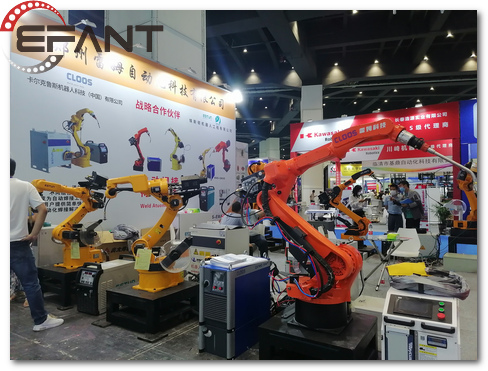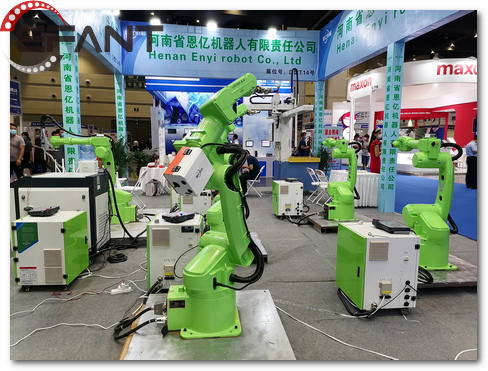

Industrial robot bearings are specialized components used in industrial robots to support and facilitate smooth and efficient motion. These bearings are crucial for ensuring precise positioning, reducing friction, and handling various loads encountered in robotic applications. They can be classified based on various factors such as their design, size, material, and application.
Here are some common classifications:

1.Radial Bearings: Radial bearings are designed to support radial loads, which are forces acting perpendicular to the shaft. They provide support for the rotating shafts and allow smooth rotation.
2.Thrust Bearings: Thrust bearings are specifically designed to handle axial loads, which are forces acting parallel to the shaft. They are used to support axial movement and prevent excessive wear and damage caused by axial forces.
3.Angular Contact Bearings: Angular contact bearings are capable of handling both radial and axial loads simultaneously. They are designed with specific contact angles to accommodate combined loads and provide accurate positioning in robot joints and other applications.
4.Crossed Roller Bearings: Crossed roller bearings feature cylindrical rollers arranged in a crisscross pattern. They offer high radial and axial load capacities and excellent rigidity, making them suitable for applications requiring high precision and compact design, such as robotic arms.
5.Harmonic Drive Bearings: Harmonic drive bearings are specialized bearings used in harmonic drive gear systems. These bearings play a crucial role in transferring torque and providing accurate motion control in robotic applications.
6.Slewing Bearings: Slewing bearings, also known as turntable bearings or slewing rings, are large bearings that support heavy radial, axial, and moment loads. They enable 360-degree rotational movement and are commonly used in robot base rotation and other applications requiring large-scale movement.
7.Linear Bearings: Linear bearings are used in robotic applications that require linear motion, such as linear stages or robotic arms with linear actuators. They facilitate smooth and precise linear movement by reducing friction and ensuring accurate positioning.
Dec-25-2024
Trade Shows&Event
Three things you should pay attention to when using turntable bearings! More InformationDec-24-2024
Trade Shows&Event
A brief introduction to the advantages of cylindrical roller bearings! More InformationDec-23-2024
Trade Shows&Event
What are the characteristics and applications of double-row cylindrical roller bearings? More InformationSubmit Request